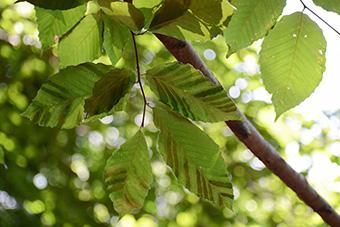- Apply
- Visit
- Request Info
- Give
Scientists to discuss beech leaf disease in seminar at Eastern
Written by Lucinda Weiss
Published on September 21, 2023

Two scientists from the Connecticut Agricultural Experiment Station (CAES) will describe their efforts to study and manage the beech leaf disease nematode, an invasive worm that is killing beech trees throughout Connecticut, at a seminar on Sept. 29 at Eastern Connecticut State University.
The seminar will be held in the David G. Carter Science Building, Room 301, beginning at 2 p.m. Richard Cowles, an entomologist at the Valley Laboratory of the CAES in Windsor and James LaMondia, emeritus scientist at the laboratory, will provide an overview of the importance of nematodes and describe their efforts to study and manage the beech leaf disease nematode.
Cowles described the beech leaf nematode as an exotic invasive that threatens the survival of beech trees throughout North America. Beech leaf disease was first found in Connecticut in 2019 in Fairfield County and has since expanded throughout the state. Infected trees in southern Connecticut are expected to die within the next few years, Cowles said. In Ohio, where the disease first showed up in the United States in 2012, beech trees are dying within six to 10 years after infection. The decline is faster in the Northeast.
Researchers in Ohio have tried to treat infected trees with a fungicide. With annual treatments, they have been able to keep trees there healthy for five years.
The nematodes that cause the disease, which shrivels beech tree leaves, are microscopic worms that are not native to North America. Scientists do not know where they came from. They spend the winter in the beech buds, and the spring leaves then emerge with symptoms. Management of the disease needs to either prevent the nematodes from entering the buds or stop them from causing changes to leaf development, according to the CAES’s assessment of management options.
Nematodes are a highly diverse group of organisms, Cowles noted, and range from those that consume bacteria to species that cause disease. The scientists will briefly describe the importance of nematodes in their presentation.


